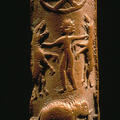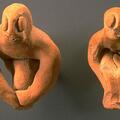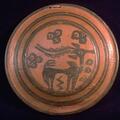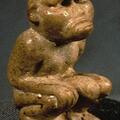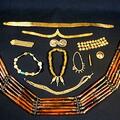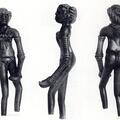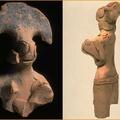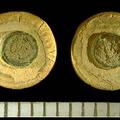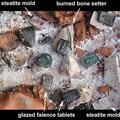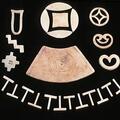Deity Strangling Tigers Tablet
Planoconvex molded tablet from Harappa showing a deity battling two tigers. "The thick jungles of the Indus Valley were full of tigers and leopards, so it is not surprising that the image of a ferocious feline is a recurring motif in ritual narratives on seals as well as molded tablets... The figure strangling the two tigers may represent a female, as a pronounced breast can be seen in profile.

